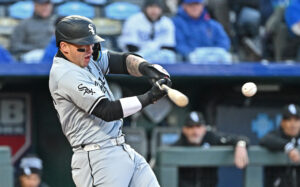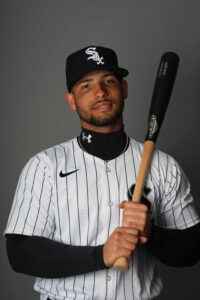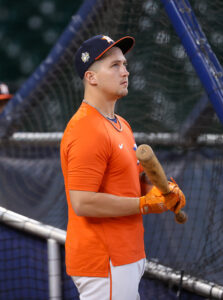The White Sox announced Thursday that they’ve selected the contracts of outfielder Joshua Palacios and catcher Omar Narvaez. (The likelihood of the Narvaez move was first reported last night.) They’ve also placed catcher Korey Lee and outfielder Mike Tauchman on the 10-day injured list due to a sprained left ankle and a strained right hamstring, respectively.
The Sox only had one open 40-man roster spot, so they’ve released right-hander Juan Carela to accommodate the addition of Palacios and Narvaez. Carela was acquired from the Yankees in the 2023 trade that sent Keynan Middleton to New York, and the Sox selected him to the 40-man roster just this past November to protect him from the Rule 5 Draft. However, Carela suffered a torn ulnar collateral ligament in spring training and required Tommy John surgery.
Since injured players cannot be placed on outright waivers, the Sox will instead release Carela. It’s relatively common for teams and players in this exact situation to quickly strike up a new minor league contract, but the right-hander will technically have the option to talk to 29 other clubs, assuming he clears release waivers. The 23-year-old right-hander has yet to make his MLB debut, but the Sox added him to the 40-man roster on the heels of a 2024 season in which he logged 106 2/3 innings of 3.71 ERA ball with a 25.2% strikeout rate and 9.9% walk rate between High-A and Double-A.
Palacios, 29, has played in parts of four big league seasons between the Blue Jays, Nationals and Pirates. He saw semi-regular work in Pittsburgh during the 2023 season and showed a bit of pop but struggled to get on base. He entered spring training out of minor league options and didn’t make the cut on a Pirates club that had several outfield options ahead of him on the depth chart. The Pirates designated Palacios for assignment and outrighted him to Triple-A, but he rejected the assignment in favor of free agency, which was his right as a player who’d been outrighted once previously in his career.
Over the past two seasons in Pittsburgh, Palacios slashed .236/.291/.398 with a dozen homers in 342 plate appearances. His 19.9% strikeout rate is a few ticks below the league-average mark, and he was plagued by a .264 average on balls in play despite frequent hard contact, which could create some optimism for better performance. However, Palacios is also an extreme ground-ball hitter (51% as a Pirate) with good-not-great speed and a pull-heavy approach — all of which leaves him a bit susceptible to a lower BABIP.
Still, with both Tauchman and Andrew Benintendi on the injured list — Benintendi suffered an adductor strain earlier this week — Palacios ought to get a chance for significant playing time. If he can make the most of it, he can be controlled for four years beyond the current season. He’s a career .302/.389/.482 hitter in 720 Triple-A plate appearances, so there’s certainly a track record of performance in the upper minors upon which the White Sox can dream.
At this point, it’s not yet clear how long Lee or Tauchman will be sidelined. Lee suffered the injury while hurrying back to first base yesterday when Guardians catcher Austin Hedges threw behind him in a pickoff attempt (video link). Lee’s left ankle contorted significantly, and he was tagged out when he crumbled off the bag. He was in obvious pain as White Sox trainers helped him off the field. He’d gotten out to a fast start, going 5-for-15 with a pair of doubles and a pair of walks in 17 plate appearances (.333/.412/.467).
As for the veteran Tauchman, he missed the first week-plus of the season with a strain in that same right hamstring and only made his 2025 debut on April 6. The 34-year-old signed a one-year, $1.95MM deal in free agency and has appeared in only three games thus far, going 4-for-10 (all singles) with a pair of walks in a dozen trips to the plate (.400/.500/.400). Given that he’s now dealing with back-to-back strains in the same muscle, it wouldn’t be a surprise if the Sox took a more cautious approach to his absence this time around. Timetables for both Lee and Tauchman will presumably become clearer after manager Will Venable meets with the media prior to today’s series finale in Cleveland.



